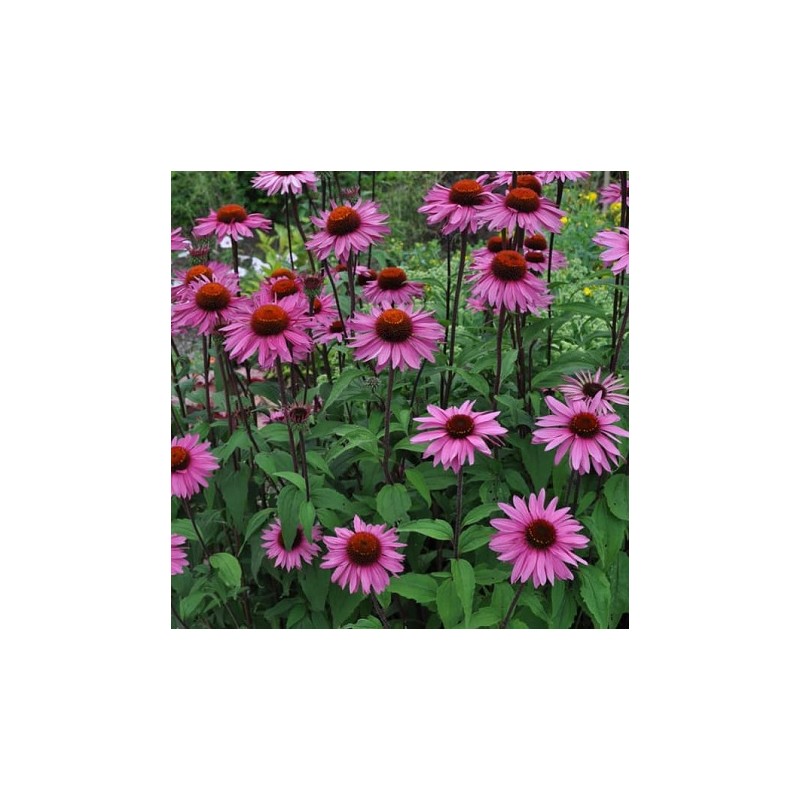
Try mixing them with ornamental grasses and other perennials for seasonal interest throughout the year. Smaller varieties are good container plants and all Echinacea are excellent for massing in the mixed flower border, or utilised as a groundcover in large areas.
#Purple coneflower seeds for sale series
Echinacea 'PowWow' is a new compact hybrid series reaching a height of +-50 to 60cm with a 30cm spread 'PowWow White' has pure white flowers, and 'PowWow Wild Berr' has beautiful deep rose flowers. Picture courtesy compact cultivars of coneflower have been developed, with new colours and which bloom for longer.

An extract is also available in tablet or liquid form from pharmacies and health food stores. Today, the flowers of Echinacea species are used to make an extremely popular herbal tea to help strengthen the immune system German medical studies have proven that echinacea does indeed boost the immune system, and is useful in treating a number of common ailments. They gargled with it for teeth and sore gums, and drank decoctions of it for colds, smallpox, measles, mumps and arthritis. The hairy, dark green leaves are lance-shaped and coarsely-toothed.Įchinacea was the primary medicine of the North American Indians who used a root poultice to treat wounds, bites, stings, and snakebite. The genus name is from the Greek "echino", meaning "˜hedgehog", an allusion to the spiny central disk. Purple coneflowers are sought after by florists for fresh and dried arrangements. Belonging to the daisy family, they produce an abundance of daisy-like flowers with swept-back, rose-purple petals, and large, coppery-orange central cones produced singly atop sturdy stems for a long period from mid-summer to autumn. There are nine species of echinacea, but the garden flowers we are most familiar with come from the species E. Picture courtesy especially the purple varieties, are popular old fashioned plants which are native to the Eastern United States, occurring on rocky plains, open woods, thickets and prairies featuring well-drained limestone, sand, clay, and loam. It attracts butterflies, including Monarchs.'PowWow' Wild Berry. This is a great plant, with a great color. On Feb 1, 2016, JBtheExplorer from Southeast, WI wrote: A must have for any herbalists or people interested in traditional medicinals. The blooms are so big and I love how they age.

Now I keep them all in pots just in case. We had rain for almost 30 days straight in SW Florida and the ones I had in the ground all perished. Love the many uses of this plant! The butterflies also love it!! I have had a few of them over the past few years. On Jul 23, 2016, NativeGarden86 from Saint Petersburg, FL wrote: I have seen different color varieties and plan to plant it along my back fence. As a novice, it has been very easy to care for and looks great for so long! It comes back strong every year and has not been invasive in my raised flowerbed. I love this plant! I have been growing purple cone flower for about 3 years. On Aug 2, 2017, Chi_townPlanter from Chicago, IL wrote: It gets sun, it gets drainage, it gets water in dry spells. Only one or two come back in spring, much smaller. It’s supposed to be an easy, wet it and forget it plant. I don’t go for the fancy colors & cultivars. On Jun 21, 2021, hamptons from Watermill, NY wrote:

This plant is said to grow outdoors in the following regions: Properly cleaned, seed can be successfully stored Regional Self-sows freely deadhead if you do not want volunteer seedlings next season Seed Collecting:Īllow seedheads to dry on plants remove and collect seeds This plant is attractive to bees, butterflies and/or birds Bloom Size:ħ.6 to 7.8 (mildly alkaline) Patent Information:įrom seed winter sow in vented containers, coldframe or unheated greenhouse Grow outdoors year-round in hardiness zone Danger: USDA Zone 10b: to 1.7 ☌ (35 ☏) Where to Grow: This plant is resistant to deer Foliage Color: Average Water Needs Water regularly do not overwater Sun Exposure:


 0 kommentar(er)
0 kommentar(er)
